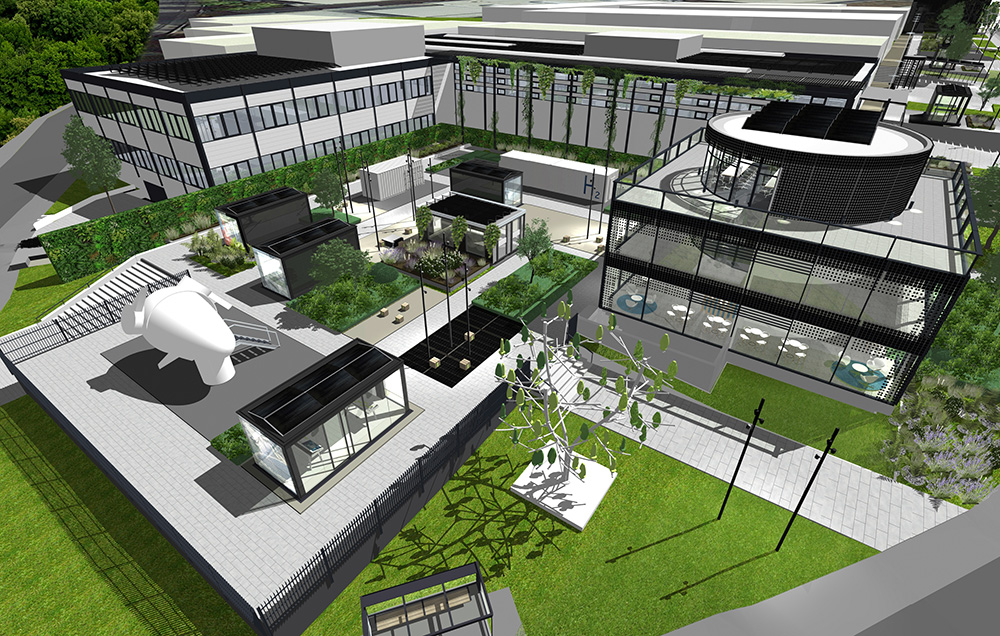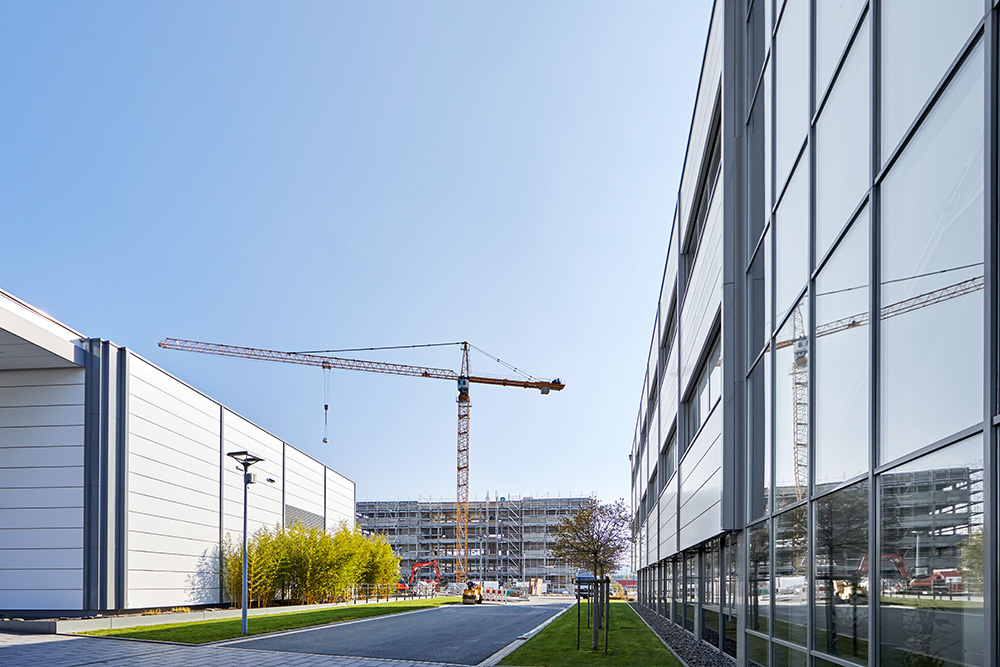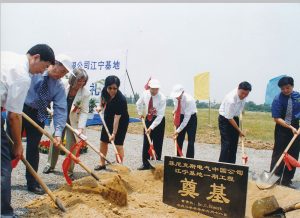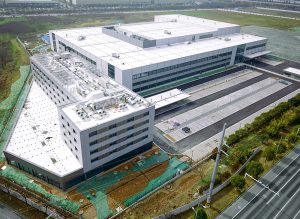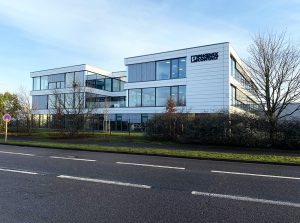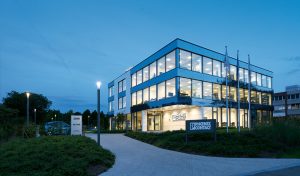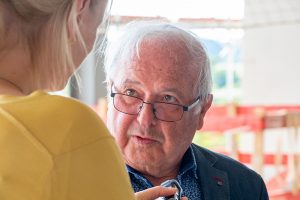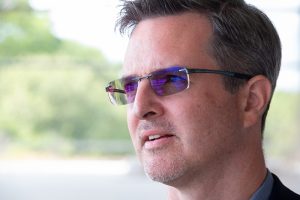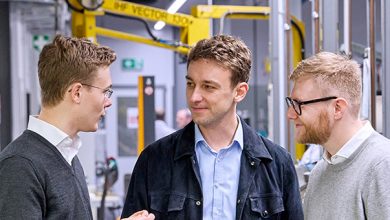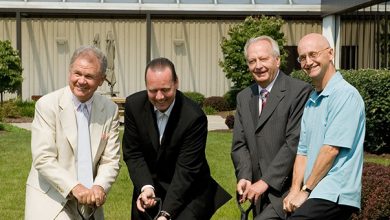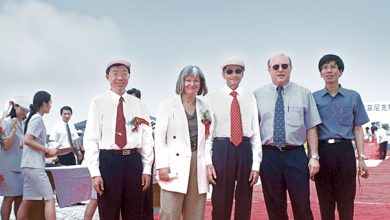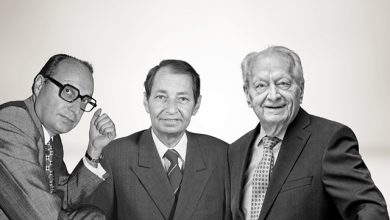Continuity and recognizability are strengths of a brand core. And good architecture is a shining business card for a company. Why the Brandstetters never get bored when it comes to constructing Phoenix Contact buildings, despite always having the same colors and shapes for decades, is something they reveal on request.
RAL 7005. aerated concrete slabs. Rectangular. Traffic white. And this for more than 40 years. Werner and Florian Brandstetter probably already dream of white cubes with a gray border. Father and son are architects and run an architecture firm in Bad Pyrmont, Lower Saxony. And they have been supporting Phoenix Contact in its global expansion for decades with planning, design and implementation.
Architect next door
Josef Eisert was already highly interested in the architecture of his company buildings. And by chance and coincidence, he met a young up-and-coming architect in Essen. Eckhard Schulze-Fielitz founded a three-person office partnership in 1955 as a newly graduated architect. This office was in the neighborhood of the small electricity company that had initially returned to Essen after the war.
A short time later, Josef Eisert needed architectural support for the construction of the first production building in Blomberg. Together with his expert office neighbor, the inventor and designer developed an architectural style that still characterizes Phoenix Contact today.
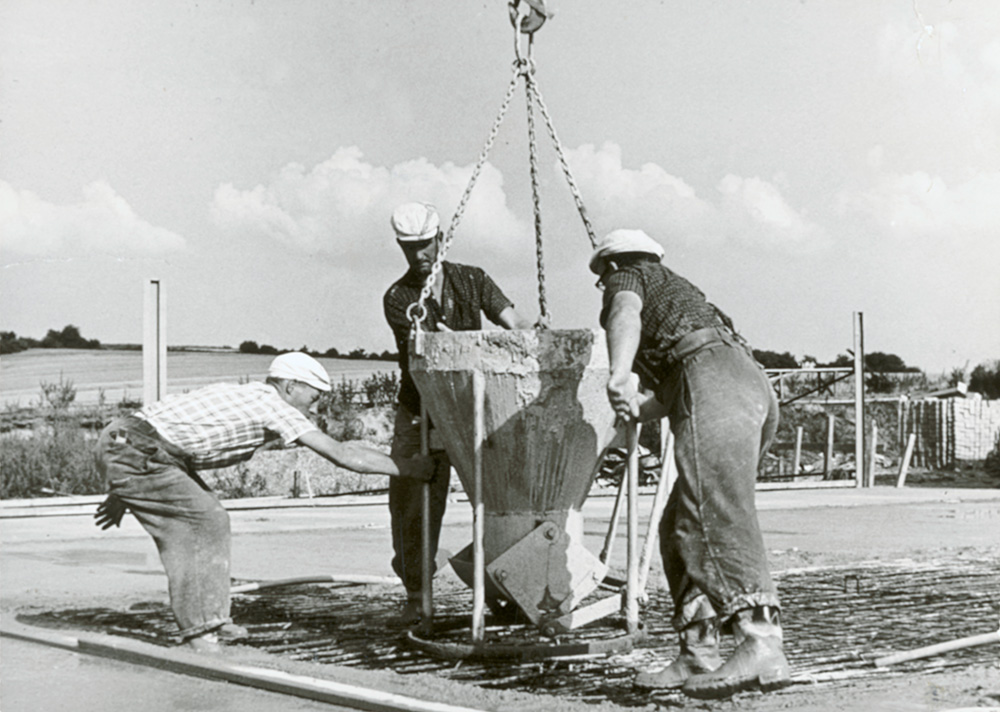


A collaboration that paid off. Because the joint architectural journey lasted longer than three decades. Klaus Eisert still remembers the beginnings of the Blomberg construction activity well: “After initial experiences with outside craftsmen, we had our own construction team with five bricklayers and building craftsmen. With our own concrete mixer, our own crane and even a Hanomag caterpillar. We poured the floor slab of the rear half of Hall 1 ourselves. Other buildings quickly followed.” It was not until 1991 that the last testimony to this very special vertical integration disappeared with the company’s own construction trailer. Until the 1980s, Schulze-Fielitz’s office not only erected numerous factory buildings, but also the still dominant multi-story administration building that has helped shape the skyline of the city of cloves ever since.
The Phoenix Contact venture
With the accidental death of Jörg Eisert, who until then had been responsible for production and thus also for the factory buildings, the collaboration with Werner Brandstetter began. The architect, who was still employed at the time, was approached to assist Eckardt Schulze-Fielitz with the construction of Building 10. The young Brandstetter seized the opportunity and went into business for himself. And he caught the right moment, because Phoenix Contact wanted to grow. And internationally. With its own buildings in the style of Phoenix Contact, so that the recognition value remains high.
From now on, it was not only important to have construction helmets and drawings ready at all times, but also vaccination and travel documents. Because with Gerd and often with Klaus Eisert as well, they often went on long journeys. “Over the years, buildings have been constructed in 27 countries,” Werner Brandstetter recounts. “Especially in the last few years, Phoenix Contact has grown extremely. And we were always there. Sometimes even in two countries at the same time,” says son Florian Brandstetter, who is following in his father’s footsteps. The building style was set, but the challenges were always very different. In Sweden, the social rooms were very important, in the USA the fire protection, father and son say.
And if the French authorities had had their way, the Phoenix Contact facades in Paris would have been given a beige or grayish hue. The building is located on “La Francilienne,” a major road ring around the French capital. “After all, that dazzles road users,” Florian Brandstetter recalls of the office’s arguments on site and long discussions. “It went so far that we questioned the location again.” An agreement was reached. Today, the building in the east of the French metropolis shines in traffic white. Since then, the two architects have known: “We always thought that bureaucracy in Germany was already a creative brake unique in the world. But that is to some extent topped in neighboring countries.”
In any case, it never gets boring, despite the specifications in terms of shape and color. Florian Brandstetter: “No matter which country, it’s a tailor-made project every time.” The technology in the production halls, on the other hand, is uniform. “The machine connections are the same worldwide,” explains Werner Brandstetter. “We can dismantle a machine in China, ship it to America and plug it right back in there.”
Between park and ice storage
The Brandstetters are currently busy with the All Electric Society theme park, the redesign of a sensational entrance to the Phoenix Contact headquarters in Blomberg. At the same time, a new production and office building with extremely sophisticated energy management is being built on the campus: “In the future, Building 60 will generate as much energy as it consumes. It is packed with regenerative technologies: ice storage, heat pumps, heat recovery, photovoltaics and much more. In addition, the standard of thermal insulation is the highest we have ever realized in a Phoenix Contact building.”
Since Phoenix Contact has become a heavyweight in the field of building automation in recent years, the in-house colleagues from the building automation department are naturally also used here to plan and realize the new buildings together with the Brandstetters. Not only the technology used is innovative, but also the overall understanding of the building project.
New projects are already waiting
And the next projects are already waiting to be implemented. “It won’t be boring with Phoenix Contact in the next few years either,” the Brandstetters smile, before turning their attention back to the details of the construction plans for the new flagship Building 60. After all, this is supposed to be ready in time for the company anniversary celebrations.
